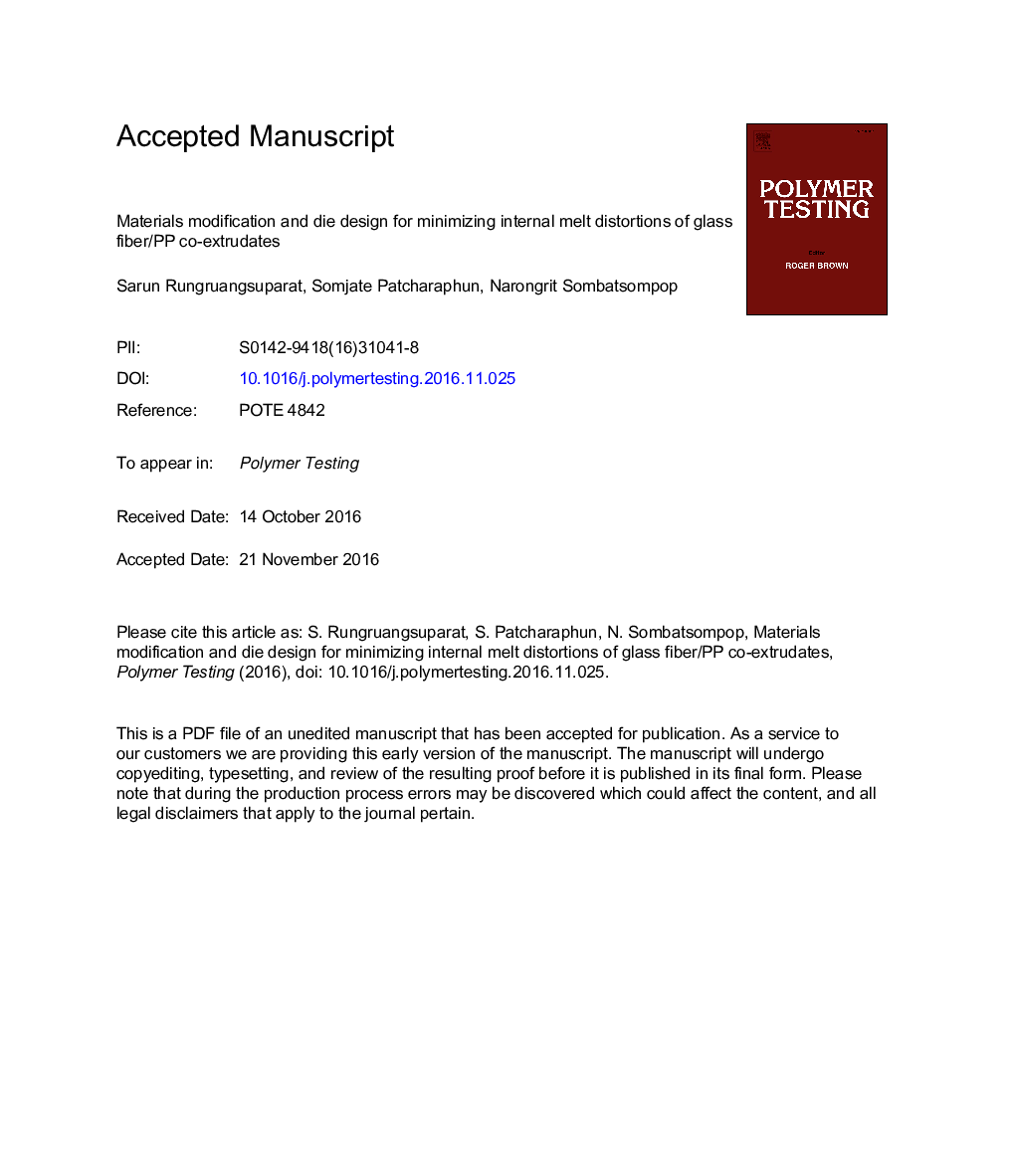| Article ID | Journal | Published Year | Pages | File Type |
|---|---|---|---|---|
| 5205553 | Polymer Testing | 2017 | 32 Pages |
Abstract
The rheological properties and internal melt fracture of polypropylene (PP) composites during co-extrusion were investigated. Neat polypropylene was used as a skin layer and polypropylene filled with short glass fibers at various concentrations (0-30 wt%) was used as a core layer. It was found that the pressure drop (ÎP) increased with increasing shear rate of the core layer (γËcore) and short glass fiber content, whereas the extrudate swell of co-extrudate decreased with increasing fiber content. The internal melt fracture in a helical form was found in the core layer of co-extrudate, this being quantitatively measured by the height (amplitude, A) and the width (period, λ) of the helical distortion. The internal melt fracture tended to increase with increasing amount of glass fiber and shear rate of the core layer. Two methods were employed for eliminating the internal melt fracture of the co-extruded PP composites:, addition of lubricants and die geometry design. The addition of silicone oil and hexagonal boron nitride (h-BN) could not moderate the melt fracture. Elimination of the internal melt fracture could be successfully accomplished by the use of a cone tapered die without capillary length.
Related Topics
Physical Sciences and Engineering
Chemistry
Organic Chemistry
Authors
Sarun Rungruangsuparat, Somjate Patcharaphun, Narongrit Sombatsompop,
